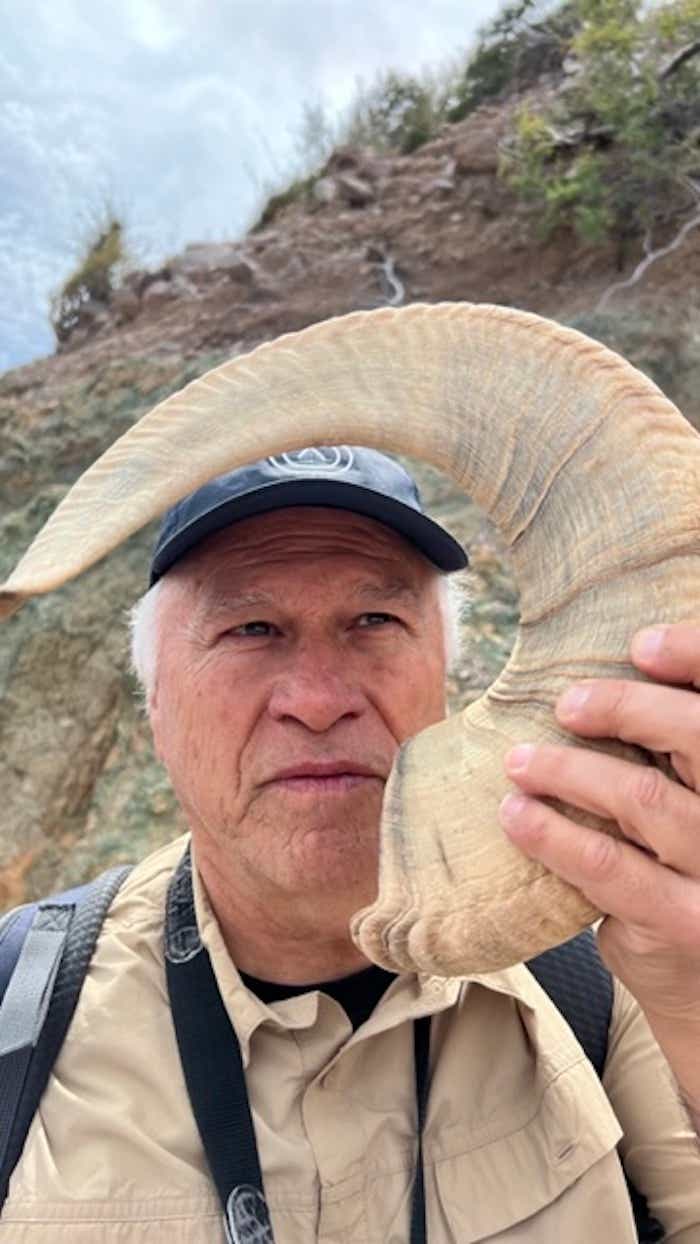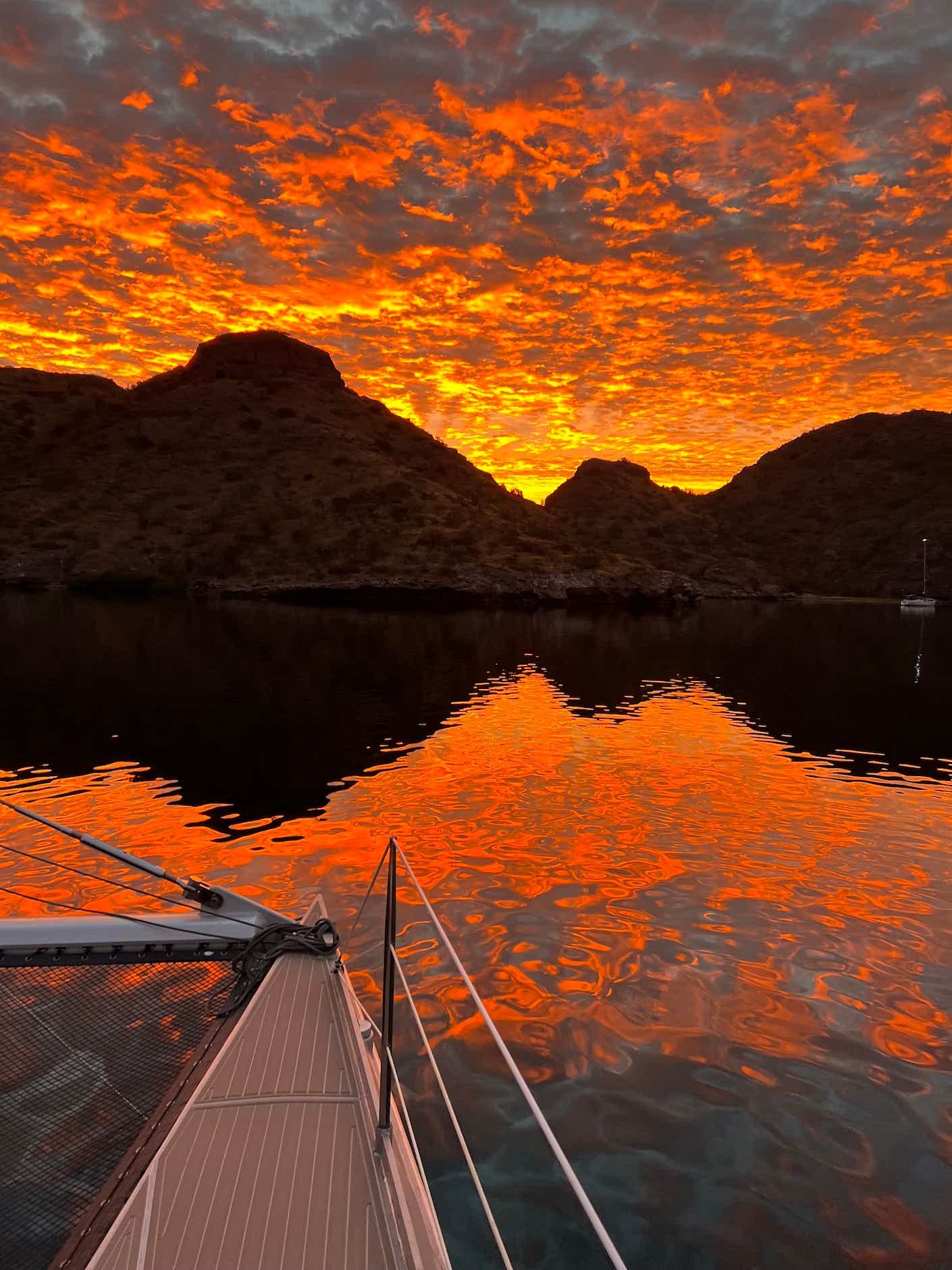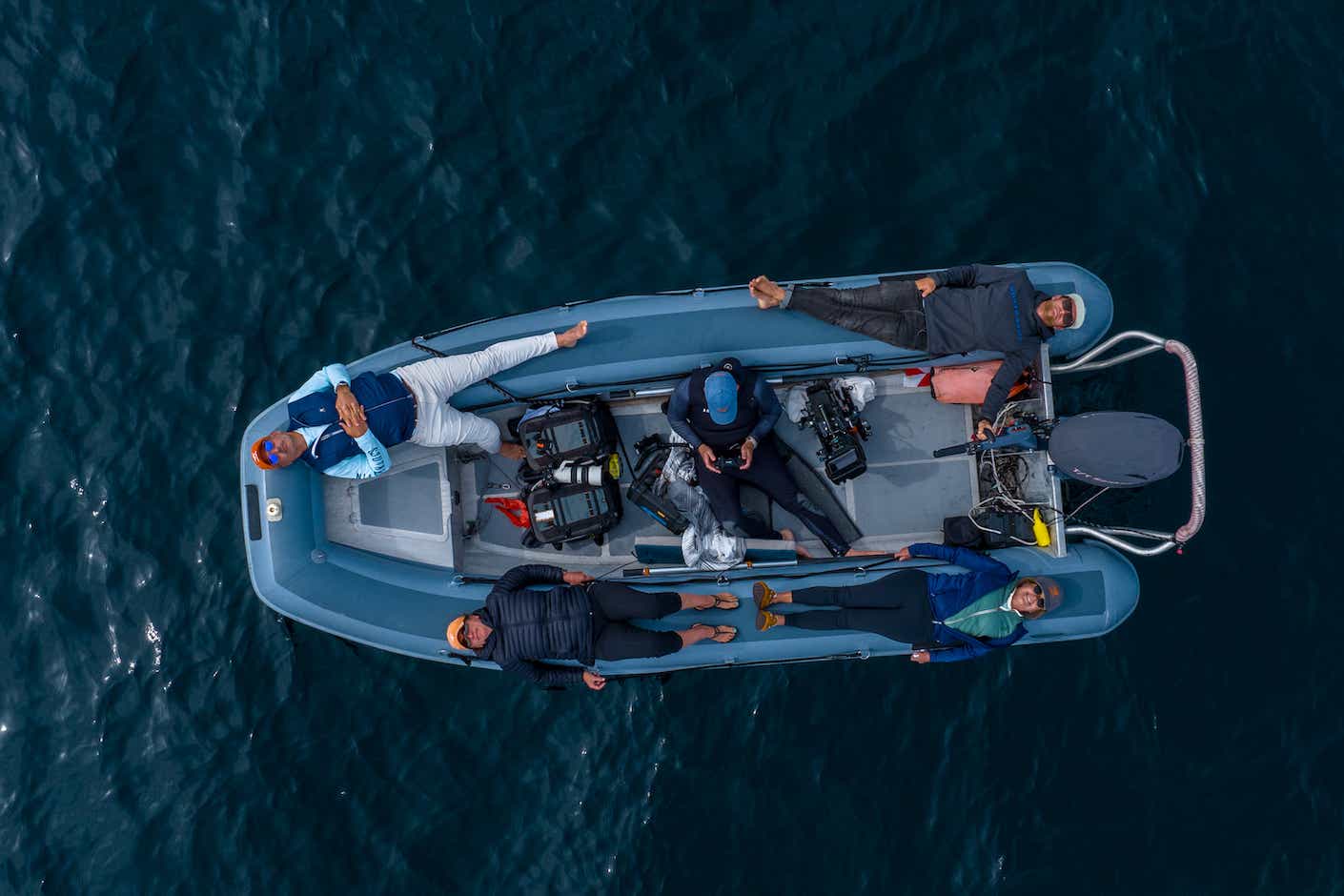Katie and I just returned from a three-night excursion in Mexico’s Gulf of California aboard the SeaLegacy 1, Cristina “Mitty” Mittermeier and Paul Nicklen’s 62-foot catamaran. Chances are, if you’ve ever seen, liked, or shared a breathtaking photograph of a whale fluking or a polar bear roaming across Arctic floating ice, the type of image that’ll stop you in your scrolling tracks, Paul or Mitty captured it. They’ve been traveling to the world’s most remote locations both studying and photographing species at risk for over 30 years.
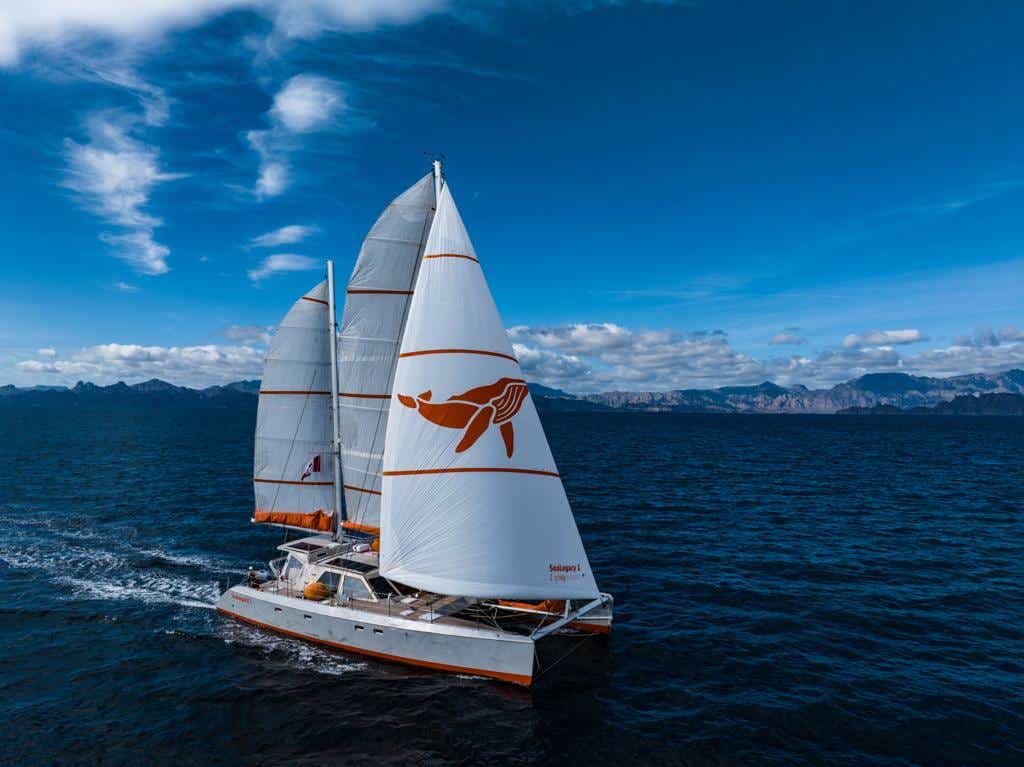
Paul, a 54-year-old who hails from Vancouver Island, Canada, is a photographer, filmmaker, author, and marine biologist, perhaps best known for his years as a leading NatGeo photographer. If it swims in the oceans and is endangered, Paul has most likely studied and photographed it. Pretty much anything you can think of in or near the ocean — from polar bears and blue whales to leopard seals and giant manta rays to whale sharks, fur seals, and dolphins — Paul has documented it. Cristina, 56, known to her friends as Mitty, originally from Mexico City and now a U.S. and Canadian citizen, is a photographer, conservationist, public speaker, and author. Mitty became a professional photographer in 1996, initially studying indigenous people in some of the world’s most remote locations and is one of the top female underwater camera women.
For the past 10 years, they have led SeaLegacy, a non-profit organization they cofounded with Andy Mann, also a photographer and storyteller, that's dedicated to protecting marine life through building awareness of the critical role oceans play in our environment. Mitty and Paul revere and love the world’s oceans and understand the importance of protecting the earth’s greatest natural resource. They’ve dedicated their lives to this singular effort and focus on storytelling at the intersection of science, art, and conservation. Beyond their unwavering commitment to environmental causes, Paul and Mitty are simply two of the most spectacular, talented, fun, and warmest people we’ve had the opportunity to spend time with. What a treat being with these two in an area as beautiful as Baja, Mexico.
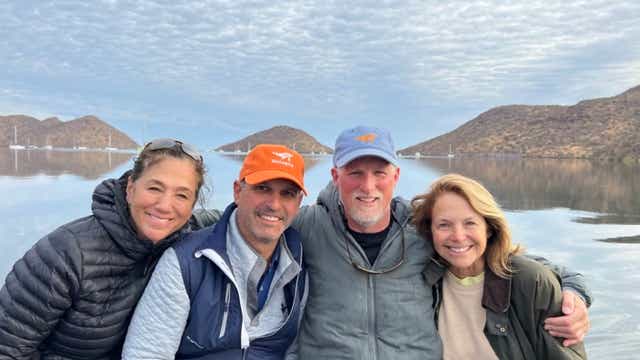
While Mitty and Paul have taken on a big challenge in drawing attention to climate change and marine life, they’ve brought along more than 10 million Instagram followers, collectively. (You probably already drool over at least one of these feeds on a regular basis, but if you don’t, they’re @Mitty, @Paulnicklen, @Sealegacy.) Clearly, they’re doing a lot of things right, and their efforts are appreciated.
Katie and I were both huge fans of their work and SeaLegacy’s mission before we ever had the opportunity to meet them. Late last year when we saw Paul and Mitty at an event spotlighting their work, Paul casually invited us to join them on a future expedition. Not many people have access to tour guides of this caliber so we jumped at the opportunity to join them.
We arrived in Loreto, Mexico late Thursday, the day my daughter Allie turned 25 (don’t worry, I sent her a nice gift). The crew later confessed how impressed they were that Katie and I fit three days of clothes into one small carry-on bag. I guess there was some concern that we might be “high maintenance” (not sure what gave them this concern…). To get an idea of our accommodations, what you need to know is that SeaLegacy 1 is a working, filming, and research expedition vessel — meaning it’s not a luxurious yacht set up for resort vacationers. Katie and I were there to learn about the oceans and marine life, and experience these wonderful mammals in their spectacular setting. We felt lucky to be on board.
In addition to our guides Paul and Mitty, we were exceptionally well-cared for over our three-night adventure, a virtual masterclass on ocean conservation and blue whales, by SeaLegacy 1’s two-man crew, 28-year-old captain, Michael “Big Dawg” Gestal, and 34-year-old Brazilian first mate, Thiago Samir Domit — two easy-going and adventurous but also skilled seamen and devoted environmentalists. We were also joined by Paul and Mitty’s close friend, Mario Gomez. A former financier from Mexico City, Mario has spent the last 15 years focusing his time and resources on environmental causes including supporting SeaLegacy’s mission. In his late 60s, with endless energy, warmth, and vast knowledge of the Sea of Cortez (as locals prefer to call this area around Baja, Mexico), Mario (a self-described bachelor not ready yet for “long-term commitment”) was the perfect addition to this group of seven. (He also can perform Elvis Presley’s “Suspicious Minds,” among other hits, to a tee, which we learned after enjoying some tequila as the sun set on the second evening of our journey.)
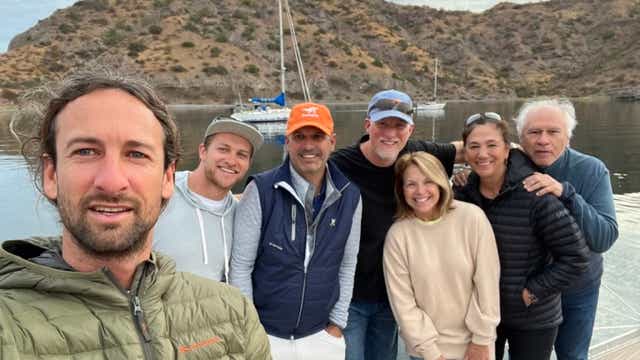
Unseasonably chilly temperatures in the 60s and high winds (20+ knots) on Thursday and Friday created unique challenges in our attempts to find whales. On Friday, our first full day onboard SeaLegacy 1, we covered lots of water but high winds and reports of orcas in the vicinity made spotting them difficult. Paul told us he couldn’t remember a day in Bahia de Loreto National Park when he failed to spot a single blue whale but that’s exactly what happened to us.
We made up for the lack of wildlife spotting with a big dinner (Mitty prepared fish tacos), music (yes, and more singing), a game of Scrabble (Katie lost to Paul!), and lots of conversation. Then we watched a portion of a new film Katie suggested on a pull-down screen until we lost our internet connection (the movie wasn’t great, so no big loss there).
Amid magnificent natural surroundings and warm camaraderie, we were filled with optimism and excitement for the next day’s adventure. Paul was relieved to see the forecast showed the weather improving significantly because it wasn’t looking so good a few days earlier. And if the weather didn’t cooperate, our chances of spotting a blue whale were unlikely. Plus, Paul suspected that the orcas that likely spooked the blue whales had passed through, meaning, the blues might return to their normal feeding and migration patterns. All of this gave us hope the next day would yield better results. (Spoiler alert: We were not disappointed.)
We slept each night on the SeaLegacy 1. Our cabin was comfortable but small. We learned later in the trip that Paul and Mitty gave us their cabin as they thought we’d be more comfortable. We were horrified to learn we had bumped our hosts from their cabin, so we made them promise to put us in the spare room if (when!) we’re invited to return to SeaLegacy.

By Saturday, the weather as Paul predicted had turned in our favor. The wind died down to almost nothing creating perfect conditions to look for blues. We pulled up the anchor early (6:15 a.m.) and set out on our adventure.
Paul uses a Mavic 3 drone, an amazing device to watch as it launches from the deck of the SeaLegacy 1 and ascends within seconds to 500 meters. The drone, which can travel at a high speed and has a range of more than several miles, has powerful cameras that can scan the horizon for signs of whales. On clear days, like this one, these cameras can spot a whale blow from miles away. Paul has a few drones on board and plenty of batteries, because every 30 minutes or so, the drones need to be directed back to the ship and their batteries changed. Absent this, the drone may lose power and fall into the Gulf of California most likely lost for good. While Paul came close to running the batteries to empty, we avoided crashing the drones over the two days we were out. The cameras are simply amazing.

It didn’t take long on Day 2 to spot a whale. In addition to his drone, Paul had asked a friend and local pilot who operates a small single-engine plane to fly over the area and report back any activity. Within two hours, we redirected SeaLegacy 1 toward the blue whale that had been spotted by the pilot (and confirmed by Paul’s drone). "Big Dawg" Mike was on the top of the ship with binoculars while Paul and Mitty were busy with drones and cameras.
We set off cruising around, the drone in the air a few miles in front of us. Captain Mike went on the lookout and put me on the bridge. That's right: With some basic instructions from Mike and Thiago, I was captaining SeaLegacy 1 on a southeast course at 6 knots (not quite full speed but close). They showed me how to use the navigation maps, keep an eye on the course trajectory as well as the depth/architecture of the bottom (to avoid sand bars or unusual structures, yikes!), and make simple degree adjustments to our headings.

Within a few hours, we’d spotted the blue whale the drone had identified an hour earlier. As we got closer to the whale, Paul captured amazing photos from the drone. He estimated this one was probably 70 to 80 feet long, approaching 80 to 90 tons (roughly the weight of a Boeing 757).
After spotting the blue whale, we quickly launched in a dingy toward the spot Paul expected the whale to emerge. The problem with this strategy, it turns out, is that after the whale submerges, it can stay underwater for 10 to 20 minutes on average. And despite their size, they swim fast — 10 to 20 knots is not unusual. So in 20 minutes, the whale might emerge more than a few kilometers away in an unanticipated direction.
However, with winds down and clear skies (and in our case, the drone above), you can spot the spray from miles away and set off in the direction to get the last few breaches before the giant mammal submerges. And then the cycle repeats. If you guess right, the whale emerges very close to your dingy and you’re in for an amazing treat.
Being proximate to these enormous creatures is beyond breathtaking. The sound of a whale blow is also easily detectable from more than a few miles away if the winds cooperate. It’s an unforgettable sound that serves as a reminder that these giant ocean creatures are mammals, and they breathe air. And they do so reliably every 10-20 minutes.
At our closest, we were probably within a few hundred feet as the whale emerged, sprayed, and went back underwater. They repeated this 8 to 10 times (sometimes more) before a final woosh, inhaling air and then arching downward, their tail just minimally breaking the surface (short of a full “fluke,” where the tail comes fully out of the water and cascades down toward the surface). Katie and I were seeing this for the first time, while Paul and Mitty have seen variations of this who knows how many hundreds of times. But we were all blown away by the power, scale, speed, gentleness, and overwhelming beauty of the moment. It’s something I will not forget.
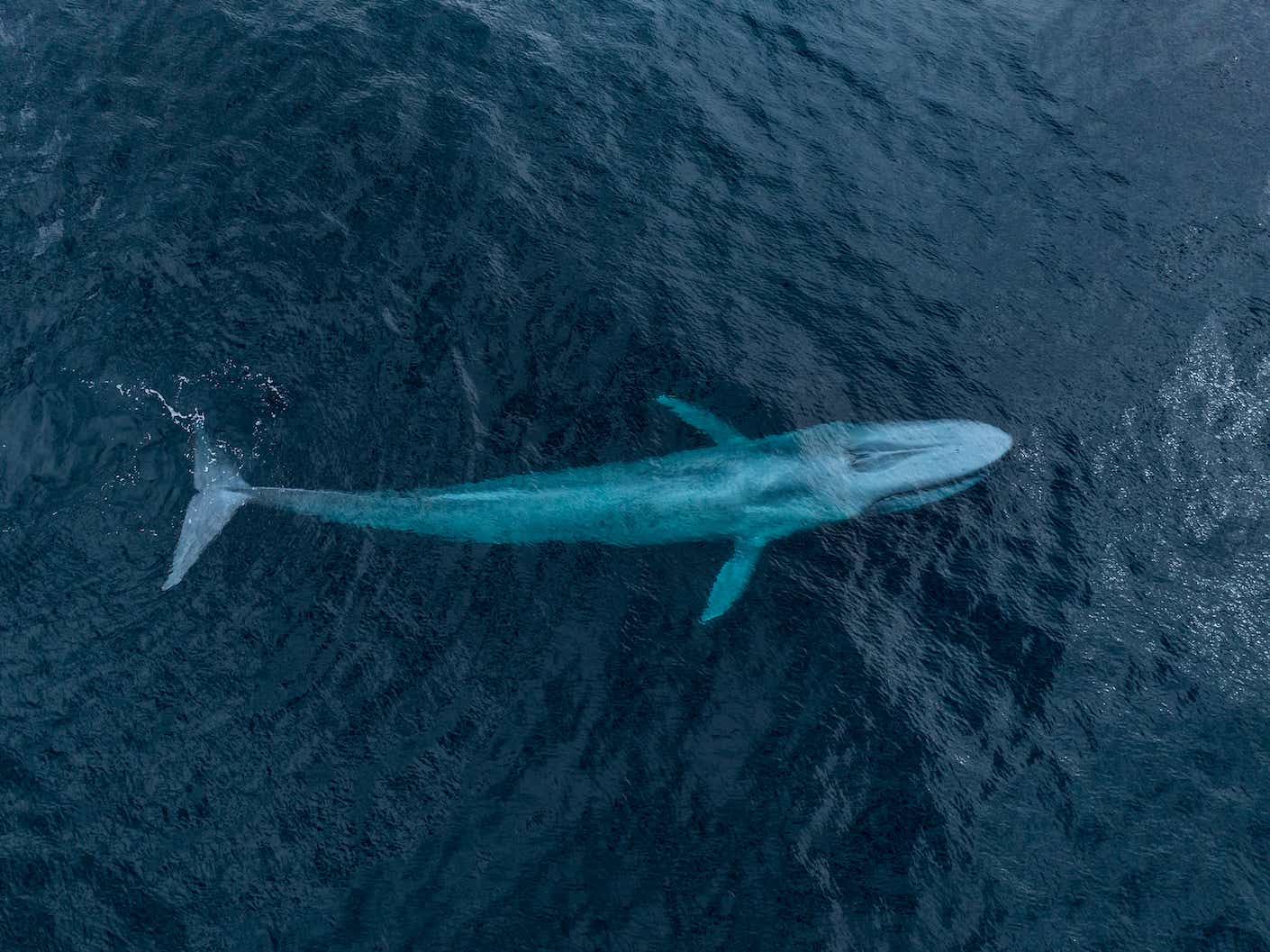
Here are a few things we learned about whales, the ocean, and even the importance of whale feces and the “poop loop”:
· Marine biologists estimate that there are only around 10,000 Blue Whales worldwide — down from around 400,000 50 years ago.
· Experts believe maybe 500 blue whales inhabit the Gulf of California area.
· Blues migrate to these areas to feed and perhaps give birth (though that has never been observed).
· Blues consume around 32,000 pounds of krill each day. The largest mammal on the planet, Blues can weigh up to 200 tons and reach 105 feet in length.
· Baby whales add 200 lbs per day.
· Whale poop, which is rich in iron, is a key element in enriching marine plants called phytoplankton. Krill eat the phytoplankton plants and whales eat krill. This in turn produces more highly iron-enriched poop and the cycle, or poop loop, repeats.
· Upon death, whales take the carbon stored in their massive bodies down to the seafloor where it remains for thousands of years.
· The oceans play a critical role in carbon sequestration. Phytoplankton on the surface of marine plants suck carbon dioxide out of the atmosphere for food. Many marine biologists believe the oceans play a critical role as a biological carbon pump.
We were blown away seeing these gentle giants up close. There is simply no way to describe how awesome it is to be next to the largest mammal ever to inhabit the earth. Far larger than any dinosaur — and estimated to be around 30x larger than a T-Rex. It doesn’t take long to see that the threat to these magnificent mammals is real — and the implications are significant.
Katie and I know we’ll stay close with Paul, Mitty, and Team SeaLegacy. What began as a bucket list item — a few days with two of the world’s greatest animal and marine life photographers in a remote area of the world — quickly went well beyond this. Consider joining us in supporting SeaLegacy and who knows, maybe one day in the future you’ll find yourself near one of these awesome giants and take pride in knowing you did a little something to help them survive and help keep our oceans and environment healthy.

Follow @SeaLegacy, @PaulNicklen, and @Mitty to learn more and consider a donation to SeaLegacy and tell them “Katie and Plus One” sent you!












